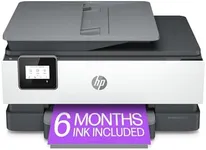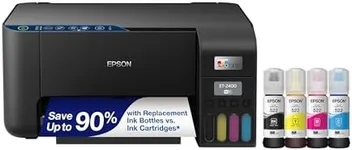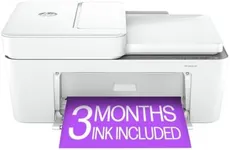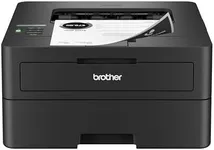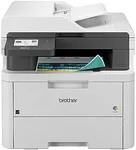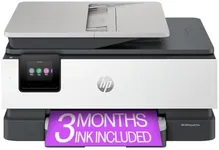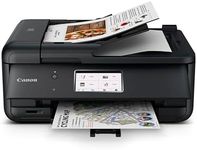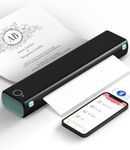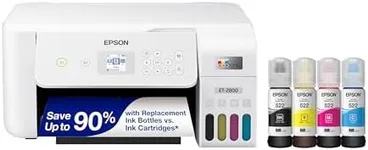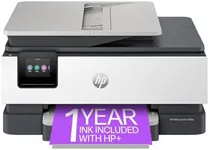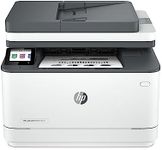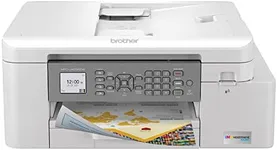Buying Guide for the Best Printer For Students
Choosing the right printer for students involves considering several key factors to ensure it meets their academic needs. Students often require a printer that is reliable, cost-effective, and versatile enough to handle various types of documents, from essays and reports to presentations and graphics. Here are some important specifications to consider when selecting a printer for students.Print TechnologyPrint technology refers to the method a printer uses to produce text and images on paper. The two main types are inkjet and laser printers. Inkjet printers are generally more affordable and can print high-quality color images, making them suitable for students who need to print photos or graphics. Laser printers, on the other hand, are faster and more cost-effective for high-volume black-and-white printing, which is ideal for text-heavy documents. Choose an inkjet printer if you need color printing and a laser printer if you primarily print text documents.
Print SpeedPrint speed is measured in pages per minute (PPM) and indicates how quickly a printer can produce documents. This is important for students who need to print large volumes of work quickly, especially when deadlines are tight. Printers with a print speed of 20-30 PPM are generally sufficient for most student needs. If you frequently print large documents or need to print quickly, look for a printer with a higher PPM.
Print QualityPrint quality is measured in dots per inch (DPI) and determines the clarity and detail of the printed output. Higher DPI values result in sharper and more detailed prints. For most student needs, a printer with a DPI of 600x600 is adequate for text documents. If you need to print high-quality images or graphics, consider a printer with a higher DPI, such as 1200x1200 or more.
Connectivity OptionsConnectivity options refer to the ways a printer can connect to your computer or other devices. Common options include USB, Wi-Fi, and Bluetooth. Wi-Fi connectivity is particularly useful for students as it allows for wireless printing from laptops, tablets, and smartphones, making it more convenient to print from anywhere in the dorm or home. Ensure the printer you choose has the connectivity options that match your devices and usage habits.
Paper HandlingPaper handling refers to the types and sizes of paper a printer can accommodate, as well as the capacity of its paper tray. For students, it's important to have a printer that can handle standard letter-sized paper (8.5x11 inches) and possibly other sizes like legal or A4. A printer with a larger paper tray capacity (e.g., 100-250 sheets) reduces the need for frequent refilling, which is convenient during busy study sessions. Consider your typical printing needs and choose a printer that can handle the paper types and volumes you require.
Cost of ConsumablesThe cost of consumables includes the price of ink or toner cartridges and paper. This is an important factor for students who are often on a tight budget. Inkjet printers generally have lower upfront costs but higher ongoing costs for ink, while laser printers have higher upfront costs but lower per-page costs for toner. Consider the long-term costs of consumables when choosing a printer, and look for models with affordable and readily available cartridges.
Additional FeaturesAdditional features such as scanning, copying, and duplex (double-sided) printing can add value to a printer for students. A multifunction printer (MFP) that includes scanning and copying capabilities can be very useful for digitizing notes, copying handouts, and more. Duplex printing saves paper and is environmentally friendly. Consider what additional features might be beneficial for your academic work and choose a printer that offers those functionalities.
